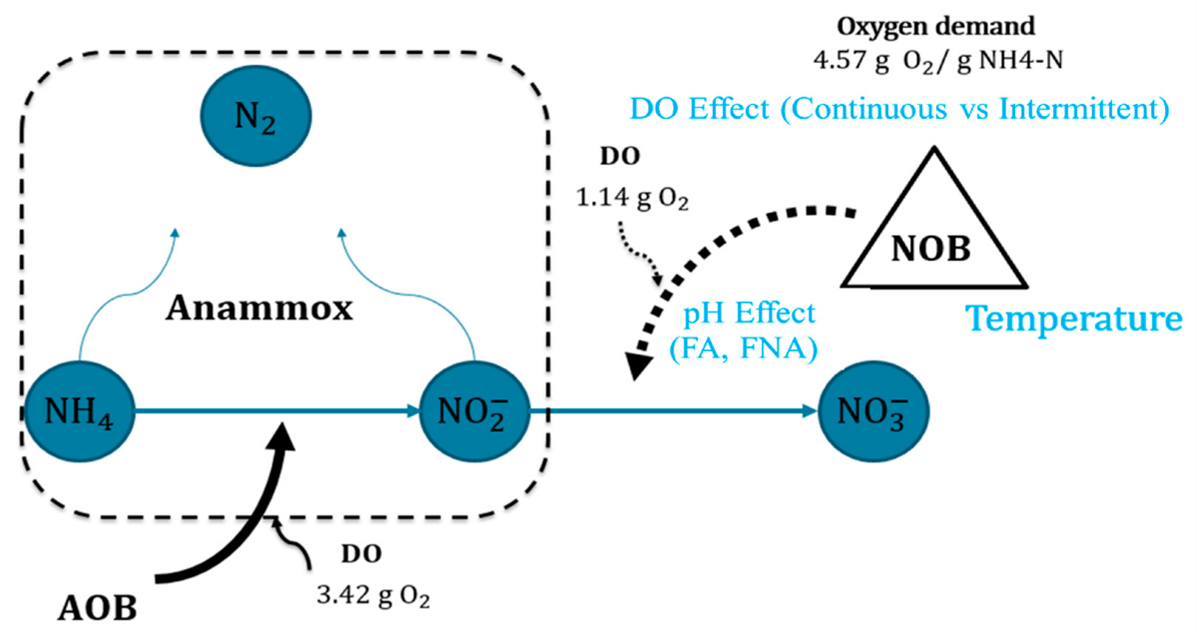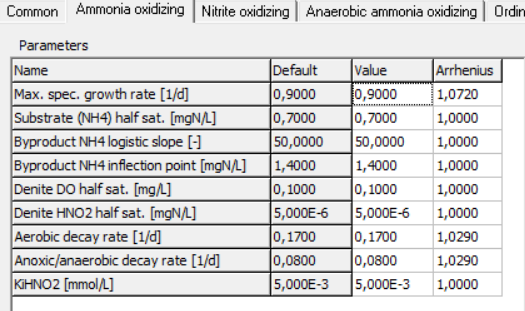The autotrophic biomasses able to oxidize the nitrite to nitrate (NOB – Nitrite Oxidizing Bacteria), in completely aerobic conditions show higher growth rates than the AOB (Ammonia Oxidizing Bacteria) which perform the oxidation of the ammonia nitrogen to nitrite. For this reason, the design of the nitrification reactors is calculated considering completely aerobic conditions (DO>=2mgO/l) and the minimum Solid Retention Time (SRT) needed to maintain enough AOB to achieve the nitritation of the ammonia nitrogen. In this manner is reasonable to assume that the nitrification process will be complete (that all the nitrite will be converted to nitrate) as a consequence of the faster growth of the NOB.

Figure 14: scheme concerning nitrification process (Jubany et al., 2009)
Nevertheless, due to the lower value of the AOB’s half saturation constant, in limiting DO conditions they can grow faster than the NOB. This condition, if combined with a low SRT, can lead to an imbalance between AOB and NOB so that the amount of nitrite produced can’t be totally converted to nitrate accumulating nitrite inside the reactor.
This dynamic can derive from an incorrect design of the aeration system (or the aeration system is not suitable anymore due to an increase of the inlet load compared to the design data) together with a not optimal management of the operating parameters.
Nitrite accumulation can represent a problem since the outlet law limit is generally very low (usually it is set at 0,6mgN-NO2–/l), and the previously mentioned imbalance can cause the exceeding of this value. The situation can be even worse in industrial contexts which need the treatment of high ammonia strength wastewaters, and so to implement a Reverse Osmosis (RO) process. Indeed, if the RO membranes show a rejection rate higher than 90% for nitrate, for nitrite this percentage drops down between 60 and 75%, reason why even a small nitrite accumulation can lead to exceeding of the law limit.
Nowadays, the ASMs allow to correctly simulate the AOB and NOB growths, and so the nitrite accumulation dynamics. Implementing these models through a simulation software gives the possibility to reproduce the actual condition of existing plants which present the problem above, and so to determine what to do for solving (changing of the management strategies, revamping of aeration system etc…). Regarding the projects of new plants, this approach grants the correct design of the aeration compartment with respect to the inlet load.

Figure 15: screen shot of the software which show the kinetic parameters related to the process equations regarding AOB’s biology
